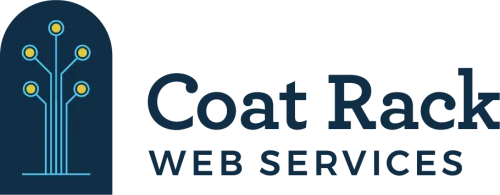September 3, 2024
In the evolving world of nonprofit organizations, maximizing impact through effective implementation often depends on how well nonprofit technology initiatives are delivered.
The success of nonprofit technology projects directly influences whether the nonprofit reaches its goals or falls short. Organizations that overcome common hurdles and successfully navigate ongoing nonprofit challenges in technical implementation will enhance their programs and achieve their mission more effectively.
Overcoming Hurdles as a Startup Nonprofit
A startup nonprofit building technical products typically begins with a strongly defined mission and initial implementation goals and assumptions. The challenge is to efficiently meet these goals and timelines to satisfy funder requirements.
As the startup nonprofit approaches this initial implementation push, nonprofit challenges to be closely aware of are the tendency to immediately over-architect applications, building features for the future rather than what it needs now.
This can lead to problematic situations. Startup nonprofits may end up with complicated architecture that requires more resources to manage and maintain. . They might find themselves trapped in lengthy technical build cycles with no flexibility to pivot. Furthermore, startup nonprofits may build towards long-term goals only to discover, on completion, that their initial assumptions have evolved and there is no time to readjust.
It is critical that startup nonprofits clearly define current requirements, without making assumptions too far into the future. They should make step-wise decisions about what technical and application architecture to implement, and work towards building functionality in an iterative manner to allow for evolving requirements.
Key steps to address these nonprofit challenges include:
-
Breaking projects into short-term phases that deliver a minimum requirement to users.
-
Following each short phase with user acceptance testing and market analysis to identify areas where assumptions and direction need to change.
Understanding How Startup Nonprofits Should Work Through Quickly Evolving Requirements
Other nonprofit challenges are when requirements change more quickly than expected. New data from existing users, market changes, and the requirements of funders may necessitate quick adjustments.
The challenge with this situation is that every pivot and change costs money, time, and productivity.
The solution is to plan preemptively for continuous change and establish processes that facilitate effective communication between business and technological perspectives. This enables quick analysis of the costs associated with change.
Some guidelines that startup nonprofits should follow to manage nonprofit challenges effectively are:
-
Ensuring every implementation step ties directly to organization goals, impact metrics, and success measures.
-
Clearly understanding and communicating the cost of every change between technical and business leaders.
-
Establishing product processes that support quick pivots and iterative improvements.
Navigating Nonprofit Technology Issues With Reporting on Nonprofit Impact
Maximizing nonprofit impact is the most important goal that a new startup nonprofit must accomplish. In today's world, high functioning nonprofit technology is essential for gathering, and reporting the data that evidences this impact.
Data-focused technical products must generate the necessary statistics to show that products are achieving their intended nonprofit impact. This data may include member statistics, member usage of impact-generating services, donor acquisition data, statistics and outcomes which evidence how programs have improved clients' lives.
Data may be gathered from various sources. But all must funnel into a single "place of truth" that is capable of generating the necessary nonprofit impact reporting.
Practical steps to achieve this include:
-
Using a data management system to track and generate reports from the data.
-
Ensuring all data-gathering products are properly integrated into the data management system, avoiding silos.
-
Building a nonprofit technology system that can quickly adapt to changes in the organization's vision, providing new data and reporting in a timely manner.
Maximizing Nonprofit Impact Through Effective Resourcing
Limited resources are common nonprofit challenges for most nonprofits. Both business stakeholder and product team resources need to be sourced successfully for products to be competitive and successful in today's evolving marketplace.
For example, nonprofits may assign an existing staff member to lead a project in addition to their full time responsibilities. While this person may have the necessary business knowledge, they may struggle due to the siloed nature of their position. They may lack the skills to source and manage technical resources, or may hire someone who is unqualified to manage all aspects of a technical project.
Alternatively, a nonprofit might outsource to a consulting firm to build a prototype, only to find that they lack the knowledge to integrate the prototype with internal systems, or scale it to a production-ready product capable of serving a large client base.
When the business resource cannot continue to manage the project they've been given, either because their regular job responsibilities grow, they lose interest, or they leave for a different job, inconsistency can arise, leading to project stagnation or failure.
To address these challenges, the organization must clearly define both the strategic roles and product team roles needed and staff them appropriately, from both inside and outside the organization. Practical guidelines include:
-
Assigning stakeholders who understand the business and its needs, and ensuring they are not burdened with other responsibilities.
-
Sourcing product and analytics teams from within the organization, provided proper training and mentoring are in place. Otherwise, these roles should be filled externally.
-
Seeking guidance on specialized technical resources which will likely involve a combination of partner organizations, consultants, and hires.
Resourcing high impact nonprofit product organizations requires organization-wide focus and a keen understanding of the roles needed and how to fill them.
At Coat Rack, we specialize in providing tailored Application Development, Technical Consulting, and Strategic Product Management services to effectively implement nonprofit technology products that empower them to deliver nonprofit impact to their clients - avoiding common pitfalls along the way.
If you're ready to transform your nonprofit technology solutions, schedule a free consultation with us today and discover how we can help you achieve true nonprofit impact and reach your mission effectively.



